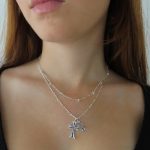Butterfly knives, also known as balisongs, are folding knives that have a unique mechanism allowing the blade to swing out from between two rotating handles. This distinctive design, often seen in martial arts performances or films, has fascinated collectors and enthusiasts alike. However, despite their appeal, butterfly knives have earned a controversial reputation, especially in Australia, where they are heavily regulated or outright banned.
The primary reason for their infamy is the knife’s quick deployment, making it easier to conceal and potentially dangerous in the wrong hands. This has led to their frequent association with criminal activity, which in turn prompted strict legal actions to limit their availability. The ban on butterfly knives has sparked a lot of debate, leaving many to wonder why are butterfly knives illegal in the first place. The answer lies in the combination of public safety concerns, their history of misuse, and the potential harm these knives could cause if they became more widely accessible.
Understanding the history and reasoning behind the ban helps to shed light on Australia’s broader stance on weapon control, which prioritizes reducing violent incidents and promoting community safety. In this context, the butterfly knife stands as an example of a tool that, while admired by some, poses significant risks that have warranted legislative action.
The History of Butterfly Knife Bans in Australia
The ban on butterfly knives in Australia is rooted in the country’s broader approach to regulating weapons that are considered dangerous or have the potential to be used in violent crimes. Australia has a long history of implementing strict laws on weapons control, with the goal of ensuring public safety and reducing the likelihood of criminal misuse. Butterfly knives, due to their ease of concealment and rapid deployment, quickly became a target for these regulations.
The turning point came in the late 1980s and early 1990s, when various states and territories began introducing legislation to restrict the ownership and use of weapons deemed to be dangerous. Butterfly knives, often linked to criminal incidents and gang violence, were classified alongside other restricted weapons, such as switchblades and flick knives. Their association with these activities, along with the fact that they can be easily hidden, contributed significantly to their banned status.
By the early 1990s, most states in Australia, including Queensland, had enacted laws that prohibited the possession, sale, and importation of butterfly knives. This was part of a larger nationwide effort to curb the use of dangerous weapons in criminal activities. Over time, these laws have only become more stringent, with heavy penalties imposed on those found in possession of a butterfly knife without proper authorization.
Today, the ban on butterfly knives remains firmly in place across the country, as authorities continue to prioritize public safety and the prevention of violent crimes. Understanding the history of this ban sheds light on the reasons behind Australia’s stringent weapon laws and the government’s commitment to maintaining a safe society.
Concerns Over Public Safety and Criminal Use
One of the primary reasons for the ban on butterfly knives in Australia stems from their association with criminal activity and the perceived threat they pose to public safety. Unlike traditional knives, butterfly knives can be easily concealed due to their folding design, which makes them particularly appealing to those with malicious intent. Their quick, almost effortless deployment gives an individual the ability to strike swiftly, raising concerns among law enforcement and the public alike.
During the 1980s and 1990s, butterfly knives gained notoriety in various criminal circles, particularly in street gang violence and other unlawful activities. These knives were often viewed as weapons of intimidation, due to their menacing appearance and the skillful flipping techniques used to deploy them. Their presence in violent crimes, especially in urban areas, led to a growing perception that butterfly knives posed a significant risk to public safety.
Furthermore, the relatively low skill threshold needed to use a butterfly knife effectively, combined with its potential for inflicting serious injuries, heightened the concerns of law enforcement agencies. Policymakers began to push for stricter control, believing that limiting access to these knives would help reduce their use in violent crimes. Public opinion also played a role, as communities grew increasingly concerned about the availability of such weapons, particularly among younger individuals and criminal groups.
The decision to ban butterfly knives was part of a broader effort to mitigate risks associated with easily accessible weapons that could be used to harm others. By removing these knives from circulation, Australian authorities aimed to prevent further criminal misuse and promote a safer environment for all citizens.
Current Legal Status Across Australia
The legal status of butterfly knives in Australia is strict and uniform across most states and territories, with these knives being classified as prohibited or restricted weapons. While the specifics of the laws may vary slightly between regions, the general approach is the same owning, selling, or importing butterfly knives is illegal unless specific exemptions apply, such as for licensed collectors or certain professionals.
In New South Wales, for example, butterfly knives are categorized under the Weapons Prohibition Act 1998, which bans individuals from possessing or using prohibited weapons without a permit. Similarly, Victoria’s Control of Weapons Act 1990 restricts the ownership and carriage of butterfly knives and places heavy penalties on violators. Queensland, under its Weapons Act 1990, also classifies butterfly knives as a Category M weapon, making it illegal to possess, carry, or use them unless you hold a lawful exemption.
While there are some exceptions for collectors, performers, or those who need the knives for professional reasons, obtaining permits or exemptions is a highly regulated process. Individuals must demonstrate a legitimate reason for owning a butterfly knife, and even then, their use is heavily monitored.
The importation of butterfly knives into Australia is also tightly controlled under federal laws. The Customs (Prohibited Imports) Regulations 1956 prohibits the importation of butterfly knives without written permission from the Minister for Home Affairs. This regulation was introduced to prevent the influx of dangerous weapons into the country, adding another layer of control beyond local laws.
Why Queensland Follows a Strict Policy on Butterfly Knives
Queensland enforces some of the strictest policies in Australia regarding the possession and use of butterfly knives. These policies are driven by a commitment to public safety and a zero-tolerance approach to weapons that can be easily concealed and used for criminal purposes. Under the Queensland Weapons Act 1990, butterfly knives are classified as Category M weapons, putting them in the same group as other dangerous and restricted items, such as flick knives and daggers.
The primary reason for Queensland’s strict stance is the knife’s potential for misuse in violent crimes. Butterfly knives can be rapidly deployed and easily concealed, making them a favored weapon for individuals with malicious intent. Law enforcement agencies in Queensland, recognizing the risks associated with these knives, have pushed for policies that prevent their availability on the streets. The aim is to reduce the likelihood of these weapons being used in assaults, robberies, or other violent crimes.
Additionally, Queensland’s approach is part of a broader national effort to prevent dangerous weapons from falling into the wrong hands. The state’s commitment to public safety aligns with national trends toward tighter weapon control. By enforcing harsh penalties, including fines and imprisonment, Queensland discourages the illegal possession and use of butterfly knives.
In certain rare cases, exemptions can be granted to collectors, entertainers, or individuals with legitimate reasons to possess butterfly knives, but these permits are heavily regulated. Even in these cases, the use of butterfly knives is closely monitored to ensure they are not being misused or displayed inappropriately in public.
Conclusion: The Ongoing Debate Over Butterfly Knife Legality
The ban on butterfly knives in Australia, including the strict regulations enforced in Queensland, highlights the delicate balance between personal freedoms and public safety. While these knives are admired by collectors and enthusiasts for their design and flipping techniques, their association with criminal activities and potential for harm has led to widespread restrictions. The question of why are butterfly knives illegal has been largely answered by the need to minimize the risks posed by easily concealable and dangerous weapons.
Despite the ban, there continues to be a debate among certain groups, particularly knife collectors and martial arts practitioners, about the fairness and necessity of such strict laws. Some argue that butterfly knives can be safely enjoyed as part of a hobby or performance art, without posing a risk to society. However, given their history of misuse and the potential for these weapons to cause serious injury, Australian authorities remain firm in their stance.
The ongoing dialogue surrounding butterfly knife legality reflects broader conversations about weapon control in Australia. As the government continues to prioritize public safety, it seems unlikely that there will be any relaxation of the laws in the near future. Ultimately, the butterfly knife ban serves as a reminder of Australia’s commitment to reducing violence and protecting its citizens, even if that means restricting access to certain weapons.










